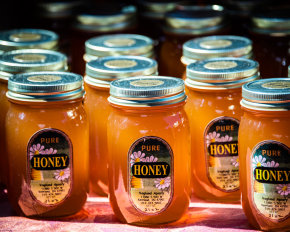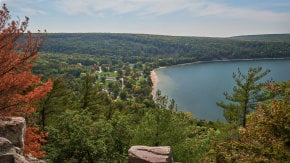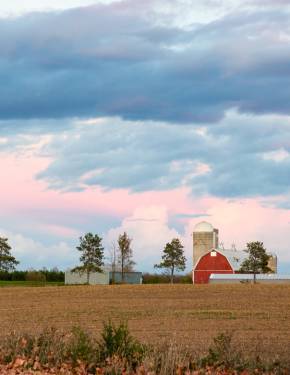Sandhill Crane Migration in Wisconsin 2026
Every summer, thousands of cranes nest and grow their colts in Wisconsin
Best time: September–October
The sandhill crane is the world's only crane species that is not endangered, thanks to 20 years of dedicated conservation and protection efforts across North America. Wisconsin hosts a stable population of the greater sandhill crane subspecies, numbering up to 100,000 birds. This population was preserved from hunting through the creation of a designated crane sanctuary. In the fall, cranes "stage" by gathering in large groups of several thousand in Wisconsin's expansive wetland areas, providing an excellent opportunity for people to enjoy observing them.
The best season for Sandhill Cranes spotting
Wisconsin's sandhill cranes return from their wintering grounds in Florida each March and remain until November. During April and May, they lay their eggs, and hatchlings appear about a month later. In the fall, particularly in September and October, adult cranes and their offspring gather in large groups of up to 10,000 along the Wisconsin River banks and islands, making this the prime time to spot them and witness their distinctive dances. As winter approaches, cold mid-November winds prompt the cranes to soar up to 5,000 feet, catching stiff northern winds as they head south to warmer climates.
Best places to see Sandhill Cranes
Every fall, up to 10,000 sandhill cranes gather on islands and along the banks of the Wisconsin River. They feed on leftover corn from farm fields, rest and gain some weight before flying south. The largest groups of cranes can be spotted at select Wisconsin wetlands such as Crex Meadows Wildlife Area and White River Marsh State Wildlife Area on the Fox River. Another great spot is Richard Bong State Recreation Area, located 365 miles (588 km) from Milwaukee.
Crex Meadows Wildlife Area
Since historic times, Greater Sandhill Cranes have gathered in large numbers every autumn evening at Crex Meadows SWA, located north of Grantsburg, WI. This 30,000-acre wildlife area features wetlands, pine/oak barrens, and forests across gently rolling terrain in western Burnett County. Crex Meadows is open year-round and offers various activities and sights each season. Visitors can enjoy well-maintained roads, observation points, and rest areas for excellent wildlife viewing. Each year, Crex Meadows SWA hosts special sandhill crane-watching events where people can witness the migration. Additionally, Crex Meadows provides opportunities for hunting and trapping, kayaking and canoeing, biking, hiking, and camping.
White River Marsh State Wildlife Area
White River Marsh Wildlife Area is a 12,000-acre property in the northwest corner of Green Lake County and the northeast corner of Marquette County. One of the most characteristic birds to be found here is the Sandhill Crane, which is present in large numbers from early spring through fall. The concentrations from late September into early November are often spectacular.
Protected Areas and Sanctuaries
The Sandhill State Wildlife Area, established 40 years ago, was created to protect Wisconsin's sandhill cranes from hunting. This designated crane sanctuary has played a crucial role in conserving the state's sandhill crane population. The Sandhill Wildlife Area offers a range of recreational opportunities, including an auto tour route called the Trumpeter Trail, which is accessible from May through October. The Bison Byway, a section of this trail, allows visitors to view the bison enclosure. Other activities include biking, birding, cross-country skiing, hiking, and wildlife viewing. The area also features observation towers, educational programs, hunting, trapping (with special regulations), and opportunities for gathering wild edibles.
Other crane sanctuaries in Wisconsin are Horicon National Wildlife Refuge near Mayville, Gravel Island National Wildlife Refuge in Lake Michigan, and Necedah National Wildlife Refuge.
Sandhill Crane Info
Weighing around 10 lb (4.5 kg) on average, sandhill cranes in Wisconsin can grow up to 6 ft (1.36 m) in height. They favor wetland areas and marshes for their ample food and water, but urbanization has reduced their habitats, impacting their populations. Protected wetlands and restored habitats are essential for their breeding and survival. As opportunistic feeders, Sandhill Cranes eat plants, grains, and occasionally invertebrates, small mammals, amphibians, and reptiles. During mating, they perform elaborate dances involving wing-flapping, bowing, jumping, and tossing sticks or plants, with these displays occurring year-round, though most frequently during the breeding season.
Sandhill Crane Migration Map
Regardless of the season, it's always better to track Sandhill Cranes by using migration maps such as eBird.


















































































